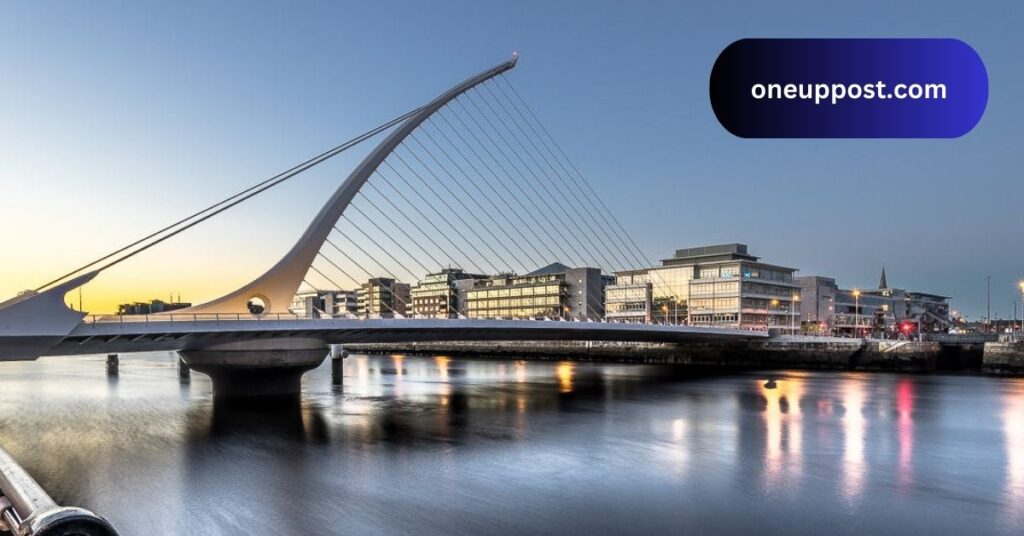Dublin’s Land To Dubliners – A Deep Dive into the Heart of Ireland’s Capital!

Have you ever thought about how much Dubliners love the land in our city? As someone who lives here, I often stop to think about all the history and stories behind every street and building. From the old streets in places like the Liberties to the busy vibes of Temple Bar, Dublin’s land means a lot to us.
For Dubliners, the land in Dublin is really important. It’s where our history and culture come from, and it’s where we feel like we belong. Dublin’s land means a lot to us because it’s part of what makes us who we are.
In this article, we’re going to explore why Dubliners feel so connected to our city’s land. So, get comfy, grab a drink, and let’s dive into what makes Dublin’s land so special to us!
Dublin’s Land Through History – Exploring The Stories In Its Land!
The historical tapestry of Dublin’s land is like a big, old quilt made up of many stories from long ago. It all started with the Vikings settling down in a place called Dubh Linn, which eventually became Dublin.
As time went on, Dublin’s land became busy with trading, culture, and government stuff during the medieval times. Buildings like Dublin Castle and Christ Church Cathedral were built back then and are still standing today.
In the Georgian era, Dublin’s land got fancier with nice streets and squares, like Merrion Square and Fitzwilliam Square.
Then, during the 1800s and early 1900s, more changes happened as factories and buildings went up, making the city grow even more. Landmarks like the Ha’penny Bridge and the Custom House were built during this time, making Dublin’s skyline look different.
Nowadays, you can still see the old parts of Dublin in its streets and buildings. Places like Temple Bar with its narrow lanes and O’Connell Street with its big roads all have stories to tell about Dublin’s past. So, when you walk around Dublin, you’re walking through history, and that’s pretty cool!
Dublin’s Culture – What Makes the City Special!
1. Different Neighborhoods:
Dublin has lots of different areas, and each one has its own vibe and culture. For example, Temple Bar has old streets and lots of music, while Moore Street has busy markets. These places show off Dublin’s history and the things its people love to do.
2. Old Buildings:
There are lots of old buildings in Dublin that remind people of the past. Dublin Castle, which is really old, shows how strong Dublin has been through the years. Trinity College is another old spot, and it’s famous for its old book, the Book of Kells. These buildings make people proud of where they live.
3. Famous Writers:
Dublin has been home to some really famous writers, like James Joyce and Oscar Wilde. They wrote stories and poems about Dublin and the land around it. Places like the James Joyce Centre and the Dublin Writers Museum remember these writers and their work.
4. Fun Places to Hang Out:
Parks and squares in Dublin are places where people can relax and have fun together. St. Stephen’s Green is a big park in the middle of the city where people go to chill out. Merrion Square is another cool spot where artists and actors show off their talents.
The National Gallery of Ireland and the Abbey Theatre are places where people can see art and plays made by Dubliners.
How Dublin’s City Has Changed – Find Out How Dublin’s City Has Become More Modern!
In recent years, Dublin has changed a lot and become more modern. The area called the Docklands used to be full of factories but now has lots of new buildings, offices, cafes, and homes by the water. People often call it “Silicon Docks” because many tech companies are there, making Dublin famous for technology in Europe.
Another place that’s changed is Smithfield. It used to be a bit run-down, but now it’s lively with art galleries, theaters, and markets. Smithfield Square, once quiet, is now busy with events and festivals celebrating Dublin’s culture.
Getting around Dublin has also gotten easier. There’s a tram system called the Luas, which has grown with new lines added. More bike lanes and walking areas have been made too, making it safer and nicer to walk or ride a bike in the city.
Even though Dublin is changing, it’s still keeping its old buildings and places. Famous spots like Trinity College and Dublin Castle are still there, reminding us of Dublin’s history and culture.
Check Out Cool Places In Dublin – Must-See Landmarks In The City!
- Trinity College: This is Ireland’s oldest university, and it’s been around since 1592. You can check out the fancy Book of Kells and the super-long library called the Long Room.
- Guinness Storehouse: This is where they tell you all about Guinness, the famous Irish beer. You can learn how it’s made, taste some, and see awesome views of the city from the top floor.
- Dublin Castle: This is a really old castle in the middle of Dublin. You can see fancy rooms and gardens and learn about its history.
- Christ Church Cathedral: This is a big church that’s been here for a long, long time. It has cool stuff like a basement and a tall tower.
- Ha’penny Bridge: This is a bridge over the river that looks really pretty. It’s famous for how it looks and how people like to walk across it.
- St. Patrick’s Cathedral: This is a big church named after Ireland’s patron saint. It’s very old and looks really fancy inside.
- Merrion Square: This is a big square with lots of pretty buildings and a park. You can see statues and paintings and have fun walking around.
- Phoenix Park: This is a huge park where you can see animals like deer and visit the President’s house. It’s a great place for a picnic or to play outside.
These places are all really fun to visit and will help you learn more about Dublin and its history.
Preservation Efforts For Dublin’s Green Spaces Amidst Urban Growth:
In Dublin, they’re working hard to keep green areas safe as the city grows. They’re doing a few things to make sure parks and nature spots stay nice while more buildings are built.
One big thing they’re doing is making and looking after parks and green spots. Dublin has lots of parks, like Phoenix Park and St. Stephen’s Green, where people can enjoy nature. They’re making sure these places are well-kept and easy to get to, so everyone can enjoy them.
They’re also trying out new ideas to keep the city green. Things like green roofs, rain gardens, and special roads that let water soak in help make sure nature stays healthy, even in busy parts of the city. These ideas are part of making Dublin a better place to live for people and animals.
People who live in Dublin are also getting involved. They’re planting trees, making community gardens, and cleaning up parks to make sure they stay nice. Groups of volunteers and organizations are helping out too, by watching out for animals and making sure parks are safe and clean.
Dublin is also trying to make it easier for people to get around without cars. They’re adding bike lanes, making streets safer for walking, and improving buses and trains. This helps cut down on pollution and makes it easier for everyone to enjoy green spaces in the city.
What Is Dublin’s Official Name And What Does It Mean? Unveiling The Moniker Of Ireland’s Capital!
Dublin, the main city of Ireland, has different names people call it. One common name is just “Dublin.” This comes from an old Irish word, “Dubh Linn,” which means “black pool.” Legend says that Vikings started Dublin around a dark, muddy pool near the River Liffey, which is why it got this name.
Another name for Dublin is the “Fair City.” This comes from a famous song called “Molly Malone,” where Dublin is called the “fair city.” This name shows how pretty and lively Dublin is.
People also call Dublin the “City of Literature.” This is because UNESCO, a group that protects important places, gave Dublin this title in 2010. It’s because Dublin has lots of famous writers like James Joyce and W.B. Yeats.
Dublin’s International Letter Code – Simplifying Postal Addressing For Dubliners!
The letter code for Dublin, Ireland, used in international contexts such as postal addresses, is “D.” This code is part of the international standard ISO 3166-2, which assigns codes to countries and their subdivisions for various administrative purposes, including postal delivery and identification in databases.
Dublin is not just the capital city of Ireland but also serves as one of its administrative regions. Within the ISO 3166-2 standard, Ireland is assigned the country code “IE,” and Dublin is further identified by the letter code “D.”
This letter code is commonly used in conjunction with other codes, such as postal codes or regional identifiers, to accurately route mail and shipments to specific areas within Dublin. It also helps in database management and statistical analysis by providing a standardized way to reference administrative regions.
FAQ’s:
1. How does Dublin’s land contribute to the city’s sense of community?
Dublin’s land serves as a gathering place for residents, hosting events, markets, and festivals that bring people together from all walks of life. Parks like Phoenix Park and Merrion Square provide spaces for recreation and relaxation, fostering a sense of community among Dubliners.
2. What measures are being taken to preserve Dublin’s green spaces amidst urban development?
Dubliners are passionate about preserving the city’s green spaces, advocating for initiatives such as urban parks, tree planting programs, and sustainable development practices. Organizations like Dublin City Council and environmental groups work tirelessly to protect and enhance Dublin’s natural landscape.
3. How has Dublin’s land influenced the city’s cultural heritage?
Dublin’s land has been a source of inspiration for artists, writers, and musicians for centuries, shaping the city’s cultural identity. Landmarks like the James Joyce Centre and the National Gallery of Ireland celebrate Dublin’s artistic heritage, while street art and performances add vibrancy to its urban landscape.
Conclusion:
The land in Dublin means a lot to the people who live there. It reminds them of the city’s history and gives them hope for the future. Whether it’s old buildings or lively neighborhoods, Dubliners feel proud of their land.
It shows off Dublin’s diverse culture and past. As Dublin keeps changing, the land stays the same, connecting everyone to their roots and hopes for what’s to come.





